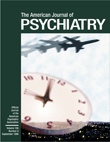In the quarter-century since fetal alcohol syndrome was brought to public consciousness, virtually all women of reproductive age in the Western world have become aware of the tie between prenatal alcohol use and birth defects—a truly remarkable accomplishment that has been facilitated by the mass media. Fetal Alcohol Syndrome: A Guide for Families and Communities is worthwhile reading for those who serve children with fetal alcohol syndrome and their families.
As a clinical geneticist starting practice in 1970, I was fascinated by the story behind the evolution of fetal alcohol syndrome. On the basis of independent clinical reports by Lemoine et al. in Nantes, France, in 1968 of more than 100 growth-deficient, behaviorally impaired children of alcoholic mothers; Ulleland et al. in Seattle in 1972 of 12 failure-to-thrive infants; Jones et al. in 1973 of eight children with a triad of growth deficiency, characteristic face, and central nervous system changes; and subsequent isolated cases worldwide, the clinical spectrum of fetal alcohol syndrome was quickly confirmed. Ann Streissguth was in the midst of all these early seminal efforts as a psychologist.
The diagnosis of fetal alcohol syndrome was initially restrictive in that only classic, full-blown cases were recognized by clinicians. Only 25% to 45% of mothers with chronic alcoholism have children with fetal alcohol syndrome. The diagnosis has since been expanded to include the milder forms, and thus the creation of terms such as “fetal alcohol effects,” “alcohol-related birth defects,” or “alcohol-related neurodevelopmental disorder.” This conundrum of classification has defied resolution. Geneticists and dysmorphologists tend to reserve the diagnosis of fetal alcohol syndrome to children of alcoholic mothers with a recognizable physical phenotype. However, over time, psychologists, psychiatrists, and developmental pediatricians have come to recognize a characteristic behavioral phenotype. The width and breadth of the clinical spectrum are understandable in view of the expected variability imposed by teratogens, based on dose, time, duration of exposure, and genetic susceptibility. A chapter on animal research studies discusses comparable anatomical features and functional disability in man and mouse.
The author leans strongly toward bestowing a diagnosis of fetal alcohol syndrome/fetal alcohol effects where maternal alcohol abuse is documented in a child with partial clinical and behavioral features. To this end, the book provides photographs and descriptions of the changing clinical features of fetal alcohol syndrome/fetal alcohol effects from early childhood to adulthood. The book also tabulates the range of behavioral disabilities, including poor habituation in infancy, poor cause-and-effect reasoning, and attention deficit hyperactivity disorder in childhood; maladaptive behaviors in adolescence; and poor life adaptation as adults. Anecdotal vignettes from patients and parents serve as good illustrations.
Appropriate diagnosis is critical because this is essential to identify the child’s needs and bring to bear school and community resources and advocacy in general for the child with fetal alcohol syndrome. This book is recommended reading because it covers a broad range of issues that surely will be of interest to service providers and families alike.

